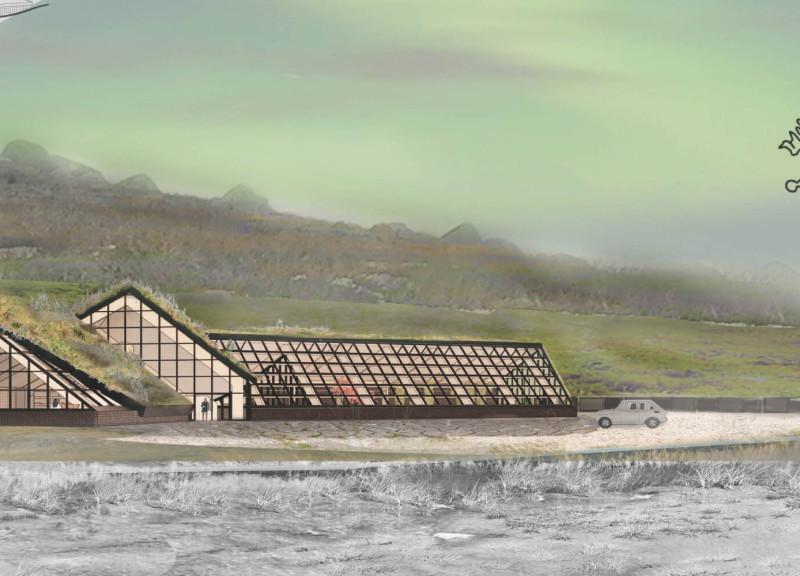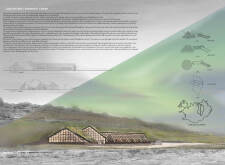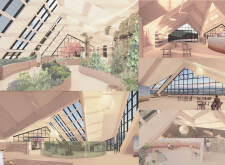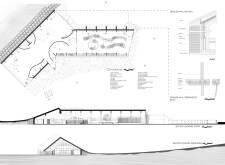5 key facts about this project
At its core, the Lake Myvatn Community Center represents a commitment to preserving and enhancing the natural landscape while providing a versatile venue for various community activities. Designed to accommodate events ranging from workshops to social gatherings, the center fosters a sense of belonging among local residents. It stands as a hub for education and interaction, inviting people to explore sustainable practices and engage with their environment actively.
The architecture of the community center features a series of thoughtfully designed elements that work together to create a cohesive atmosphere. The structure incorporates cross-laminated timber, which serves as a sustainable building material that offers durability and a reduced environmental impact. In addition, the use of basalt and basalt fiber, conveniently sourced from the local geography, contributes both to the building's strength and its aesthetic connection to the natural landscape. Large glass facades allow for ample natural light, connecting indoor spaces with the outside world and making the scenery an integral part of the user experience.
The building's layout is agile and user-friendly, designed to accommodate a range of community functions effectively. Gathering spaces, flexible meeting rooms, and an indoor greenhouse are all thoughtfully placed to promote interaction and education regarding sustainability. The greenhouse is particularly noteworthy, as it not only provides a space for year-round plant cultivation but also serves as a practical demonstration of ecological practices for visitors and locals alike. The incorporation of natural materials such as stone for landscaping establishes a solid foundation that respects and complements the volcanic terrain surrounding Lake Myvatn.
A unique design approach is evident in the community center's roof structure, which features sloping angles that echo traditional Icelandic turf houses. This feature serves a dual purpose: it provides aesthetic appeal and functionality in minimizing snow accumulation, while also enabling passive solar heating and cooling. The project integrates green roof systems that support local flora, providing insulation and enhancing biodiversity, thus contributing to overall environmental resilience.
Sustainability is central to the design philosophy of the Lake Myvatn Community Center. Utilizing geothermal heating, rainwater harvesting, and greywater recycling techniques, the building operates with a focus on minimizing its ecological footprint. The thoughtful orientation of the building maximizes both natural light and prevailing winds, reducing reliance on artificial energy sources and fostering a deeper connection between users and their natural surroundings.
Overall, the Lake Myvatn Community Center serves as a model for modern architecture that respects its geographic and cultural context. By challenging conventional building practices and prioritizing community engagement, this project highlights how architecture can serve as a catalyst for local relationships and ecological awareness. The design invites visitors and residents to explore the intersection of nature and community through innovative architectural ideas and solutions.
For those interested in delving deeper into the project's intricacies, a review of the architectural plans, sections, and designs will provide valuable insights into the nuanced approaches taken. The architectural details present a practical representation of how sustainability and functionality can coexist, inspiring future projects aimed at enhancing community life and promoting environmental responsibility. Explore the presentation of the Lake Myvatn Community Center to fully appreciate the comprehensive design and community-oriented vision that defines this exemplary architectural endeavor.


























